
Are you looking to embrace a simpler, more sustainable lifestyle, but you are limited on space? If so backyard or urban homesteading is a great way to get started. Whether you live in the country, the city or in a neighborhood, I believe everyone can enjoy the rewards of homesteading no matter where you live. Backyard homesteading involves transforming your home, suburb or city backyard into a self-sufficient space to grow your own food, live sustainable, and raise small animals.
Just because you have a smaller space doesn't mean that you can't have a thriving homestead. There are plenty of ways to grow your own vegetables and fruits. You can build raised beds, vertical arches, use a cattle panel trellis, and containers to grow a variety of vegetables. Plant a herb garden, fruit trees, berry bushes, and nut trees to create your very own small fruit orchard.
You can reduce waste and enrich your soil by making and maintaining a simple composting system. Add a rain barrel to collect rainwater for watering your garden. When you're deciding on what you want to plant in your backyard (bushes, shrubs, borders or trees), make a point to choose things that have a potential to provide food for your backyard homestead.
When it comes to planting flowers and herbs on our homestead, we try to choose varieties that have a purpose to them. We plant perennials and wildflowers such as bee balm, echinacea, calendula, chamomile, yarrow, lavender and lemon balm to attract pollinators to our garden. Not only do they provide beauty to our homestead, but they can also be used for medicinal purposes when making homemade teas, tinctures, poultices, salves, and cleaning products.
When my husband and I were first married, all I wanted to do was find an acre or two of land so we could begin our homestead journey. At the time we lived in ,the city with a pretty good-size backyard to grow a garden, but we wanted more. When it came time to move 13 years later, we found a house on 1/2 acre and we were so excited to finally start our dream, but something just didn't feel right to us. The property was definitely in our price range, but the exterior of the house showed signs of flood damage.
It was disappointing, but we went with our gut and passed on that particular property. In the end, we found a house in a neighborhood with a good-size backyard (about 1/8 acre). We told ourselves that just because we live in the city doesn't mean that we can't have a little bit of our dream and make the most of what we have. And what we have is a house, in a neighborhood that has an HOA. Now don't let that scare you, because you can still homestead in an HOA, and we are proof of it.
Our situation is far from ideal, but we still homestead just on a smaller scale. Whether you live in the city or the country, it's all about incorporating homesteading practices into your existing space. Backyard homesteading is a rewarding experience, but it is not without its hard work and challenges. No matter how hard the work is, I truly believe it's worth it in the end.
We truly love our backyard homestead that we have created, and it's so rewarding to be able to eat the vegetables and fruits that come from our own garden. I am still in awe every time I open up our cupboard or freezer and see all the food that we grew and preserved! Honestly, there's no better feeling!
Thirteen years ago, when we first moved into our home, we started out with a small 8 x 8 foot garden. Fast-forward to today and this is what our backyard garden looks like now! 🡳 It is a huge difference, and I wanted to show you that it is possible to start out small and add on until you have your little backyard homestead just the way you want it.
If you would like to start backyard homesteading, my advice to you is to start small, be realistic, and utilize the space you have. I have listed some ideas that have worked for us and will hopefully inspire you to get started on your own backyard homestead journey!
20+ Ways to be a Backyard or City Homesteader!
🏡 EVALUATE YOUR GROWING SPACE:
- Choose an area in your backyard to start a vegetable garden and make sure it gets a minimum of 6 hours of sunlight. This is what most vegetables and fruits need to grow and produce to their full potential.
- When it comes to building a raised bed, start small. Our first raised bed was 8 x 8 feet, and each year we have added on and expanded. Currently, our largest raised bed is 40 x 8 feet with three additional 6 x 3 foot beds, two arched trellises, and two 5 gallon grow tables that house a total of twelve - 5 gallon buckets.
- This is a great resource from Tiny Garden Habit on 14 vegetables to grow in 5 gallon buckets.
- If you live in an apartment or rent a home, consider patio gardening or container gardening. You can grow several vegetables (peppers, tomatoes, lettuce, carrots, radishes, summer squash, spinach, small cucumbers, green onions and a variety of fresh herbs) successfully in 5-gallon buckets and pots.
- Take advantage of hanging baskets, stackable pots, and vertical growing systems for strawberries or other trailing herbs.
- Every seed, plant, tree or bush that you plant should have the potential to provide some type of food or use for your homestead. Plant edible berry bushes, herbs, and fruit and nut trees. We have a small fruit orchard that we have added over that last 13 years. We have 3 pecan trees (one is producing), 4 apple trees, 2 pear trees, 1 peach tree, a blackberry patch, strawberry patch, and 5 blueberry bushes.
- Succession and companion plant whenever possible to maximize food, space and to promote healthy plants.
- Learn how to save seeds from your garden. Seed saving helps to preserve heirloom seed varieties, $aves money, and helps you become more self-sufficient. When seeds are properly dried, they can be stored in airtight containers and remain viable for 1 or more years.
- Plant a herb garden to supply fresh culinary herbs, and dehydrate the remainder to use throughout the year. Another method instead of dehydrating all of those herbs is by herb bombs. Herb bombs are a wonderful way to preserve an abundance of fresh herbs. I also plant a variety of fragrant herbs to use for medicinal and cleaning purposes (salves, tinctures, tonics and homemade cleaners).
- Start a simple composting system which will reduce waste, enrich your garden soil and support healthy plant growth. Start with a pile in a corner, use a trash bin or build your own compost bin.
- Collect rainwater in rain barrels. The water you collect can be used to water your garden and lawn. We currently have 2 rain barrels on our homestead.
🧺 HANG DRY YOUR LAUNDRY:
- Hang your clothes on an outdoor clothes line. My husband built ours, so I could hang dry some of our laundry to help save on electricity costs. The Texas heat can be brutal, so I pick and choose what I line dry. Bed linens, rugs, active wear, swim wear, jeans and towels are prefect for line drying. Line drying towels and bed linens can offer a natural sanitizing effect and the sunlight can also kill some of the bacteria and pathogens present on fabric. If your towels get a little stiff after line drying just tumble dry them for 5-10 minutes to fluff them up.
- Make you own non-toxic cleaners and laundry detergent for pennies on the dollar. Homemade natural cleaners are easy to make using staple ingredients like, baking soda, vinegar, citrus peels, essential oils and fresh herbs. Here is a great resource with recipes on how to make you own natural cleaners.
- Plan to do most of your indoor and outdoor projects yourself and make use of items you already have on hand. We built all of our own raised beds and easy projects around our home. DIY projects are a great opportunity to learn new skills as well as help save money.
- We transformed our hall coat closet into a canning closet that stores all of our home canned goods. My husband installed wood shelves to house all of my jars and canners so everything is in one place and easy to access.
- There are no root cellars or basement in Texas, so we store our home grown root vegetables potatoes, onions, garlic, and all of our winter squash inside milk crates and place them in the darkest and coldest part of our house. Once winter arrives we move them to the garage.
- Building your own fire pit allows you to enjoy time outdoors even in the chilly season. It involves picking your location, preparing the ground and base, assembling the fire pit structure and using materials like, bricks, pavers, or stones. Building your own fire pit is a great homesteading project. Here is the fire pit that we made on a budget.
❄️HEATING YOUR HOME:
- Take advantage of your fireplace if you have one. We have a wood fireplace and use it pretty much all winter long to help heat our home, and cut down on heating costs. We purchase large amounts of firewood off season to get the best price.
- Save the wood ashes from your fireplace if it is wood burning. Wood ashes can be beneficial to your garden. Wood as is rich in potassium, calcium, and other trace minerals essential for healthy plant growth. Fallen tree leaves are another valuable resource for your garden. They can be used to compost, or amend the soil which enriches the soils overall health.
🥫 LEARN HOW TO PERSERVE FOOD:
- Learning how to preserve your own food is a skill you must learn on a homestead, because it allows you to fill your pantry and enjoy your harvest throughout the year.
- Try to eat in season as much as possible and preserve the rest. There are several methods of preserving food, canning, pickling, freezing, fermenting, dehydrating, and freeze drying.
🍳 COOK FROM SCRATCH & MAKE YOUR OWN CONVENIENCE ITEMS:
- Cook from scratch, meal plan, make your own pantry essentials and convenience foods, and purchase dry goods in bulk (rice, sugar, flour, oatmeal, grains, beans, coffee, etc.). We store all of our dry goods in five gallon buckets and keep them stored in our canning closet.
- Keep a full pantry with simple ingredients and try to make as much as possible homemade. Make great use of leftovers by transforming them them into new meals.
- Make and preserve your own pasta, bake homemade bread, maintain and bake with a sourdough starter, make your own butter, yogurt, and cheese using pasteurized or raw milk.
- Making simple cheeses such as cottage cheese, mozzarella, cream cheese, ricotta, and farmers cheese is a great introduction into cheesemaking and are a fun hobby to start.
- Make your own chicken, beef, and turkey stock, Ferment pickles, sauerkraut, and make your own water kefir, diary kefir or kombucha.
- If your city allows backyard chickens or ducks, start with a few to supply your homestead with fresh eggs. We live within city limits in an HOA, so chickens are prohibited. Not by the HOA but per the cities ordinance. We purchase fresh eggs from local farmers, markets and friends that have farm fresh eggs.
🐟 MEAT - GAME & FISHING:
- My husband deer hunts, hog hunts and fishes (bass and crappie) to supply some meat for our freezer and then we purchase the remainder of our meat in bulk and package it up ourselves.
- Save money on ground beef by grinding your own brisket. We purchase a large brisket for $3.49 - $3.99 LB on sale, and grind it ourselves for so much less. It also taste better and you know exactly what is in your ground beef.
💰 LIVE WITHIN YOUR MEANS:
- Pay off debt, live within your means, and create a budget. It can be hard at times, but it makes a huge difference.
- And finally the size of your property doesn't matter, it's what you do with what you have that really matters. Don't try to do everything at once. Homesteading takes time and patience so enjoy the process along the way.
Below is a little photo tour of our backyard homestead. I have also included a full video at the end of this post, showing you how we transformed our backyard into thriving homestead.
This is our large 40 x 8 foot raised bed garden. We started small and expand each year. Our garden is located on the west side of our house.

These are our three additional 6 x 3 foot raised beds. My husband DIY these shade clothes using PVC pipes for the frame which helps give our smaller beds a bit of shade when the heat of summer really sets in.
We have two rain collection barrels that we have on top of bricks to give them some height, and they are located between our 3 smaller garden beds. You would be surprised at how often they fill and need to drained.
This is our clothes line that my husband built to line to dry some of our items like towels, sheets, bed spreads, rugs, etc. If you are interested in building one this video shows a similar one to what we have.
Here is a photo of how we make use of cattle panels. They are perfect for most vining vegetables and plants such as pole beans, cucumbers, sugar pumpkin and winter squash.
We prefer bush beans over pole because they have a higher yield of green beans for us. Pole beans give us more space, but they don't produce near enough for us. Texas has a longer growing season, so we can plant a spring and fall crop here in North Texas.
My favorite green bean variety to grow are "Contender" beans. They are a stringless bean with a high yield. I normally home can about 35-40 jars to get us through the year.

We have 2 arched trellises that we keep pretty full. We grew pickling cucumbers one year and they took off. Vining zucchini, cantaloupes, honey nut squash, pole green beans, loofah, and winter squash are a great options for an arched trellis.
My favorite brand of picking cucumber to plant is the Ferry Morse Sow Easy Cucumbers. They provide a high yield and they haven't let me down yet.
Look at all of those future pickles!
I use one of my 6 x 3 smaller garden beds for my herb garden. I normally plant all of my culinary herbs in one small bed except basil because it really needs it's own pot. I plant other medicinal herbs in buckets, pots or within our landscaping.
So many fragrant herbs ready to be dried and preserved. Oregano, thyme, mint, and apple mint.
I use a mesh herb drying rack and place it in my garage. I recently changed from oven drying because the herbs retain their color and flavor better by air drying. Normally air drying takes about 3-5 days, but can take up to a week. For me it is a fix it and forget it method, so I love that.
I love to grown mint and apple mint to use to make Homemade Mint Chip Ice Cream and Meadow Tea concentrate to freeze. I always make sure to have some on hand to use throughout the year. I grown my mint in a tub to keep it contained, because if you grow mint than you know it is very invasive.
We grow and cure enough onions to last us at least 6 months. Any of the onions that start to look a bit bad, I normally chop and freeze so they don't go to waste. Don't toss out the onion tops because those can be dehydrated and grinded up to make onion powder.
Potatoes are another one our must have crops. They provide us with plenty of potatoes to make future meals.
Our favorite potato varieties to grow here in North Texas, are Yukon gold, Kennebec, German butterball, Red Norland and Red Pontiac.
I use a utility rack in my spare bedroom to cure all of our onions and potatoes. The rack pictured is my favorite because the onions fit upside down in the spaces perfectly. I always tell people if you come and stay at our house it is a high chance that you will be sharing a room with some cured veggies.
Corn is another staple crop that we grow every year. We plant our corn using the block method rather than in long rows, the block method allows for better pollination. Corn is wind pollinated so having them close together increases the chances of pollen reaching the silks to develop ears, and better kernel development. Having them in a block also helps to keep the corn upright during any wind or storms. Once the corn matures, we add a few cattle panels between because Texas storms in the spring are brutal.
On a good year, we have enough corn for fresh eating and the remainder is freezer preserved for winter. Corn is hit or miss crop for us. Since we live in a neighborhood, we tend to get rodents that love to clean our corn crop out. This is exactly what happened this year, so sadly we had to pull up all of our corn. It is disheartening, but we try again every year. I was able to purchase some corn at the store for a great price to preserve some for winter.
When the corn does come in it is always so beautiful.
The corn varieties that work in our growing zone which is zone 8 are, Kandy Korn, Silver Queen, Peaches and Cream, and Sweet G-90. We have also tried growing Amish Butter Popcorn for the last 2 years, but either the spring storm or rodents got a hold of them. We're still holding out hope because growing your own popcorn is deliciously fun.
Once the corn is harvested the okra goes in it's place. Okra loves hot and humid weather so normally it's around July when we plant Okra.
We have had great luck with Clemson spineless okra, so that is the variety that we grow every year. I like to make breaded okra for the freezer and pickling the remainder.
I talked earlier about making the most of your space when it comes to backyard homesteading. Well, this photo above is a great example of that. We have 5 different variety of apple trees in our back yard, and every year we grow our sweet potatoes underneath the trees. We were running out of growing space, so we gave this area a try, and we harvested a pretty decent crop of sweet potatoes. So this has been the spot that we have used for the last 2 years.
The variety we planed last year and pictured above was Beauregard. This year we planted Georgia Jets. We always try and grow our own sweet potato slips, but sometimes they can be finicky. We have had great luck with purchasing our slips online through Urban Farmer.
Anything we harvest is a blessing (big or small). We didn't get a big harvest of last year, but it was our first year and a learning curve for us. We're hoping this years crop will produce more.
Tomatoes are another crop that we depend on each year to provide us with homemade spaghetti sauce, enchilada sauce, pizza sauce, salsa, canned tomatoes, chili base, tomato sauce, and barbecue sauce. Our favorite varieties to grow are Early Girl, San Marzano, Roma, Amish Paste, Paul Robeson, and Chocolate Cherry Tomatoes.
This year we planted 11 tomato plants, so we are hoping for a good harvest. One important thing to remember when growing tomatoes is that if you live in a very hot climate it helps to add a shade cloth over your tomatoes when the heat of summer sets in. This will at least give them somewhat of a chance. Also never water your tomato leaves because that will introduce disease such as blight to your plants. Always water at the base of the plant.
Bell Peppers, Jalapenos and Banana peppers do really well in raised beds or in 5 gallon buckets.
I love to make homemade pepper jelly, candied jalapenos, and pickled jalapenos.
Our pride and joy is our small blackberry patch. We planted thornless blackberries about 5 years ago and they have grown leaps and bounds since then.
On a good year we can harvest around 2 gallons of blackberries from our little patch. We do have to cover the blackberries with bird netting to keep the birds from enjoying them before us.
Our blackberries are always big, beautiful and perfect to make homemade Blackberry Pie Filling or 🠋
Apple trees are a wonderful addition to a backyard homestead. We have 5 apple trees and not all of them bloom and produce at the same time, and it is also hit or miss on what we get each year. Several factors play into this and a lot depends on two things. If the trees received enough chill hours over fall and winter, how much fruit the tree produced the previous year. Normally we get a harvest every year, but if it is was a big harvest the previous year, we don't usually get any apples the following year. The varieties we grow are golden delicious, granny smith, gala and red delicious.
If you're wondering why there is a milk jug in our apple tree it's a DIY Codling Moth Trap. Codling moth traps are easy to make yourself, and baited with homemade liquid to attract the moths. The trap helps to control the codling moth population, and to prevent the female moths from laying eggs on the leaves near fruit. When the larvae hatch they will burrow into the apples, so controlling them is a must. We normally have more of a bird issue with our apples rather that worms, but it is always safe to add a trap on each of our apple and pear trees.
Last year we had only one apple tree that produced apples, but no worries because we harvested 103 apples off just 1 tree!!!!! What a blessing, because I was able to preserve homemade applesauce and make several bags of freezer apple pie filling. I also save all of the skins and cores to make apple scrap jelly, so nothing ever goes to waste around our homestead. If I don't have time to make the scrap jelly right away, I just pack them up in a gallon size Ziplock bah and freeze for a later day.
This is our 4th year for our Belle of Georgia White Peach tree. Peaches are another wonderful fruit tree to have on your homestead.
This year we harvested about 25-30 peaches. Just enough to make Peach Jam & Peach Scrap Jelly.
We have two pear trees on our homestead and both are producing fruit. One tree is smaller so the fruit tends to be smaller until it reaches it's full potential. Our large pear tree (Kieffer Pear) provides us with big beautiful pears.
This is how many pears we harvested off our large tree!!! Everyone always asks... what do you do with all of those pears? I say preserve them of course. I make pear preserves, pear honey, pear sauce, canned pears and cinnamon pear scrap jelly.
Pecan trees are another great addition to our Texas homestead. We normally harvest anywhere from 10-15 pounds of large paper shell pecans each year.
Look at those beauties!
This small strawberry patch is new to our homestead and was added last fall using bare root. I chose bare roots so I could get them established in the fall for spring. We did not get any fruit this year, but were hoping next year that will change.
Winter squash does very well in a raised bed garden, and stores nicely over winter into spring. I always grow butternut squash, honey nut squash and sugar baking pumpkins. I store them in a cool, dark place in a bedroom. If any of them start to look like they are getting bad, I will roast them in the oven, puree the pulp, vacuum seal and freeze. Butternut squash makes the best smooth and creamy pumpkin pie!
Last year we had to pull all of our Honey nut squash early because a bad cold snap was coming in, but now worries because honey nut squash will continue to ripen off the vine to pretty orange - brown coloring.
🌻 Welcome to My Homestead Kitchen 🌻
Homesteading isn't limited to what you do in your backyard. It's also about the skills that you bring inside your home and kitchen. My kitchen is my happy place where I cook, bake, preserve and enjoy our harvest. Today I want to share with you all the different things that I make and how I store items in our homestead kitchen and pantry, so things efficiently in my kitchen.
I spoke earlier about trying to DIY and repurpose items in your home. I had this quilt rack sitting around collecting dust in my bedroom corner, so I turned it into a produce stand for my kitchen. All I had to do was add a piece of wood to the bottom to hold my large baskets. I used chalk paint and stencils to decorate the sides, and purchased all the baskets at Walmart on clearance. This by far is one of my favorite repurposing projects.
This is the canning closet that my husband made out of our hall coat closet. We removed the cheap wire shelving that came with the closet, and he added wood shelving with wood braces to store all of our homemade canned goods. This closet is definitely one of my favorite places to hang out.
Under the last wood shelf in our canning closet is a large open space on the floor that houses all of my bulk dry goods. I store, flour, sugar, beans, rice, coffee, oatmeal, and dried homemade pasta in food grade 5 gallon buckets. I normally vacuum seal everything and add it to the buckets along with Silica Gel Packet to control moisture. Having a good stock pile of bulk items and pantry staples is a must in a homestead kitchen.
I have a smaller vintage style pantry in the kitchen where I store additional pantry staples that are used on a daily basis. Sea salt, brown and powdered sugar, rice flour, baking soda, dehydrated potatoes, steel cut oats, oatmeal, powdered milk, semolina flour, chia seeds, homemade mixes, homemade granola, and more. I love having these items at an arms reach.
Homestead cooking involves cooking from scratch as much as possible, utilizing homegrown or locally sourced ingredients, and incorporating food preservation techniques in your kitchen. A few examples are baking your own bread, maintaining a sourdough starter, making your own butter, pasta, yogurt and other baked goods.
Once you make your own bone broth or stock, you will never purchase store-bought again. Making your own stock is also a great way to use up bones and vegetable scraps from previous meals.
Once of the best things about having a small fruit orchard in our backyard is the endless jars of homemade jelly, jam, preserves, butters and pie fillings. Once winter rolls around it's like opening summer in a jar.
Besides canned pie fillings, I also make Apple Pie Freezer Packs. Everything you need in one bag to make apple pie, apple crisp or apple cobbler.
I also like to make freezer pies so I can have homemade pie at a moments notice. I freeze the unbaked.
My favorite pie fillings to home can are Blackberry, Raspberry and Apple.
When I have an abundance of fresh apples and my canning closet is full of jelly and pie filling, I make a big batch of homemade applesauce.
Fermenting is another way to preserve a portion of your produce. This year was my first year to dabble into fermenting and it is a lot easier than I thought it would be. I made Fermented Sauerkraut and Lacto Fermented Pickles for the first time.
I also can potatoes in my pressure canner to use in soup, stews and for making fried potatoes.
When we have a good year for corn, we preserve it by blanching, vacuum sealing and then freezing the corn. We also remove some of the kernels and bag those up to make fried skillet corn.
I keep all of my dried herbs stored in mason jars and place them on shelf in my kitchen. Not only are they pretty to look at but I have handy when I want to refill my smaller spice jars.
I love making herb bombs using fresh herbs. Herb flavored bombs are a great way of preserving and abundance of fresh herbs, and perfect for soups, stews, sauces, sautéing and more!
Meadow Tea Concentrate is a delicious way of preserving mint.
I also use blackberry leaves and fresh berries to make tea infusions.
Herbs can be used to make home remedies such as medicinal tinctures (post coming soon), salves, and balms.
Natural Citrus Vinegar Cleaner is a great all-purpose cleaner that smells wonderful, cleans good and is non-toxic.
My favorite scents are orange, lemon and grapefruit.
This homemade Liquid Laundry Detergent uses natural non-toxic ingredients along with a herbal infusion. My favorite herbs to use are lavender, lemon balm, rosemary and eucalyptus. You can make a big batch of laundry detergent for pennies and it will last at least 6 months.
By implementing all or some of these practices, you too can create a thriving backyard homestead, and start enjoying the benefits of fresh, homegrown food, living a more self-sufficient lifestyle. If you feel that you cannot afford homesteading think again. Homesteading is a mindset set and wherever you call home you can do it. It's about being frugal and saving money, being resourceful, and leading a simpler, more self-sufficient lifestyle. It can be hard work and dirty at times, but it's also rewarding, and I wouldn't have it any other way.
Hungry for more? Check out the Recipe Index by Mommy’s Kitchen.
Be social and follow along on Facebook, Tik Tok Instagram, Pinterest and Twitter for all the latest updates!
Join the Mommy's Kitchen & Homestead Mailing List and you'll get the latest recipes and updates delivered straight to your inbox for Free!

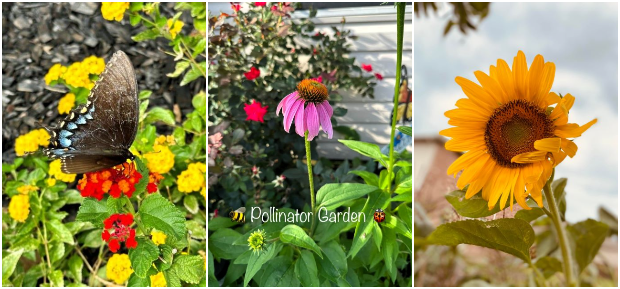





.jpg)








.jpg)






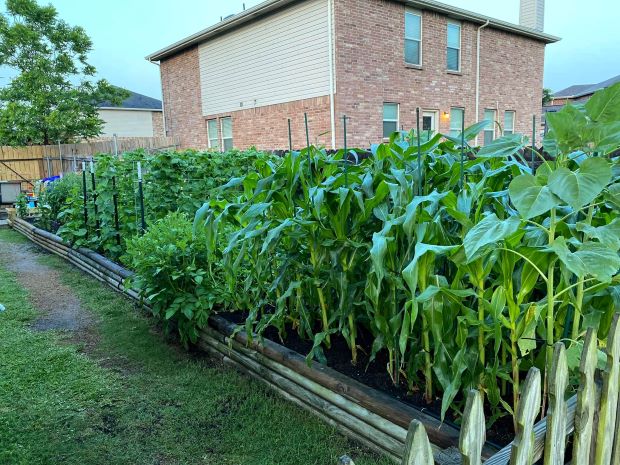







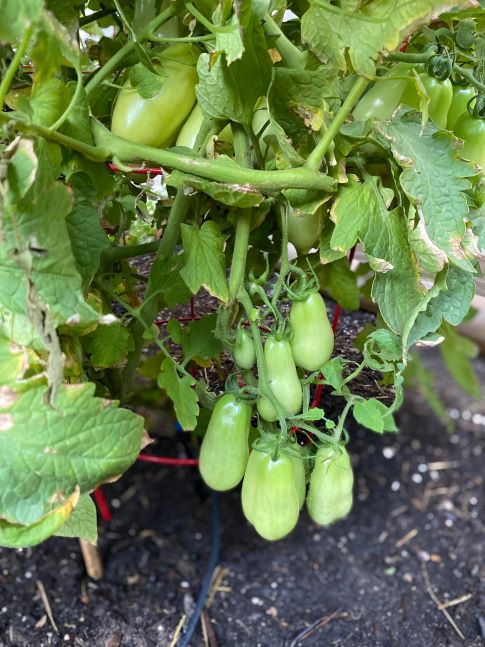







.png)



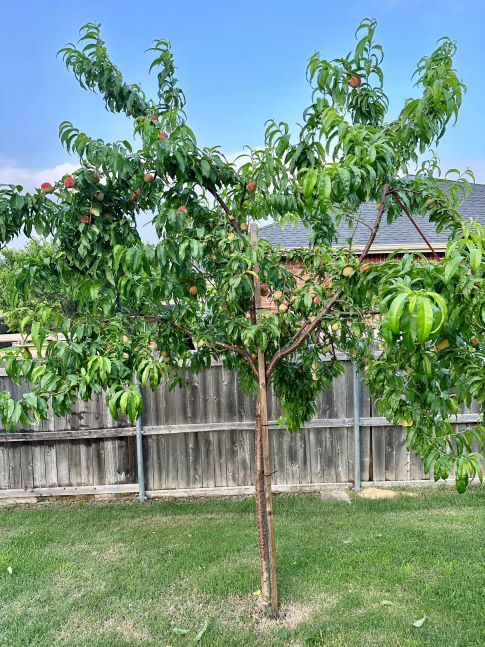
.jpg)
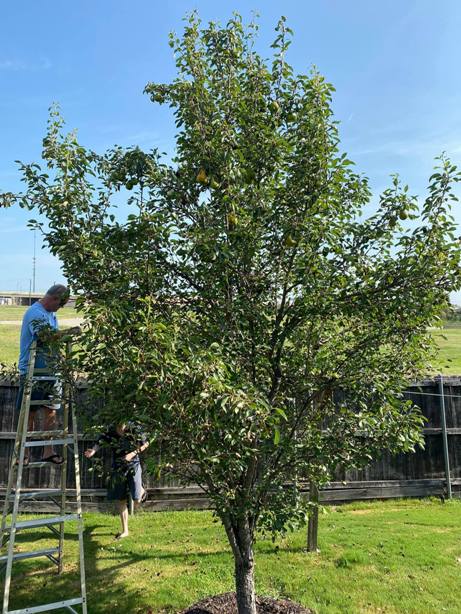






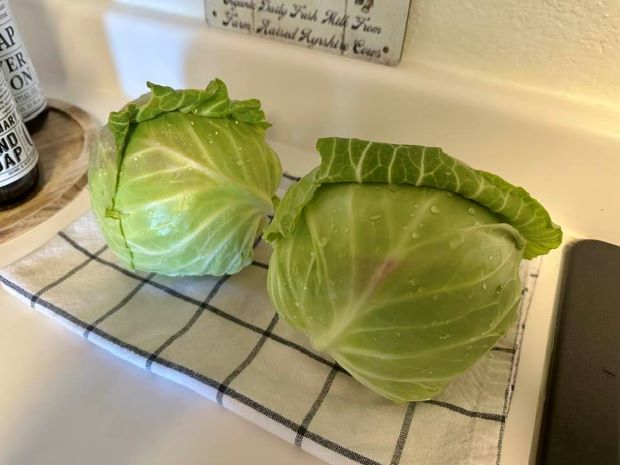



.jpg)


%20(1).png)

.png)


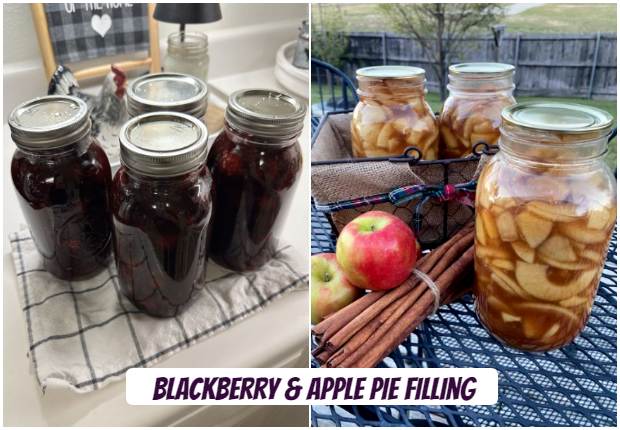
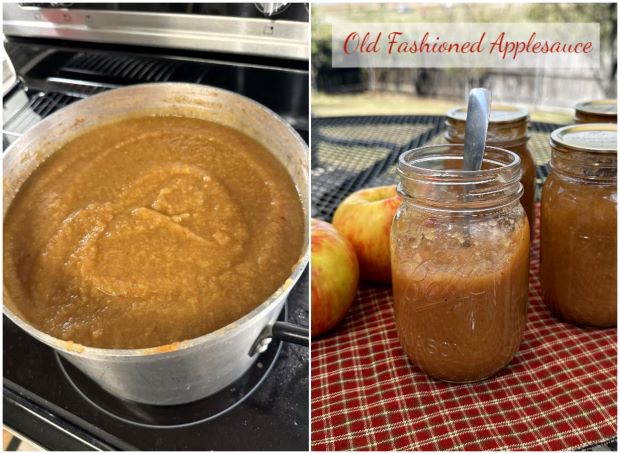
.png)


.jpg)






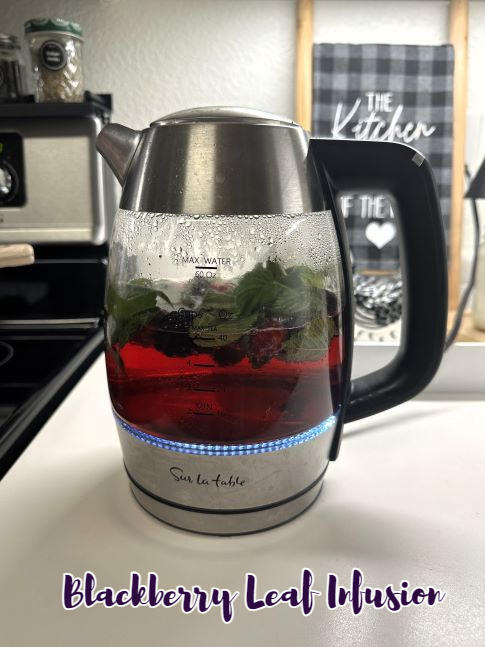






0 comments